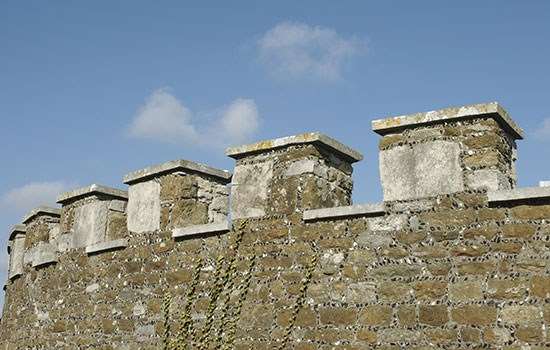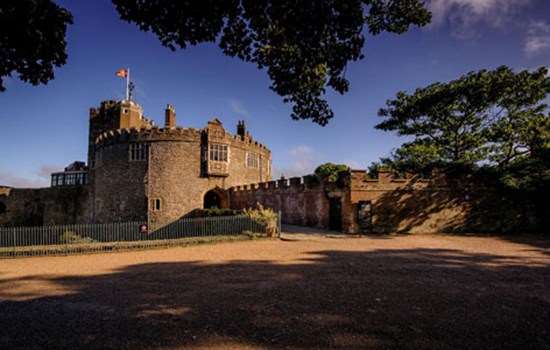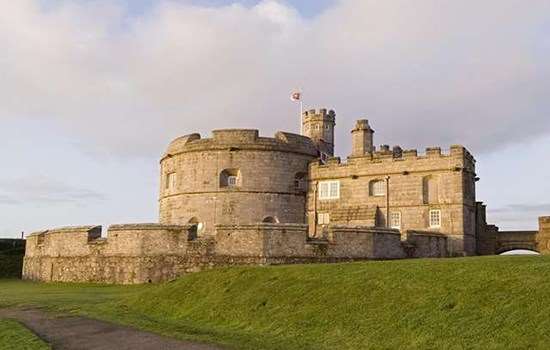Key facts about Deal Castle
- The castle was built in 1539–40, and was the centre of a network of three Tudor artillery forts that included Walmer to the south and Sandown to the north.
- On 27 December 1539, Anne of Cleves, Henry VIII’s new wife-to-be, landed at Deal and rested at the unfinished castle before continuing on her journey to meet the king.
- In 1639, the Battle of the Downs – a naval battle between the Spanish and the Dutch – took place in the English Channel in sight of Deal Castle. Several Spanish vessels were sunk and 2,000 sailors came ashore at Deal and Dover.
- The castle came under siege during the English Civil War in 1648, when soldiers loyal to Charles I fought Parliamentarians in several bloody encounters.
- During the Second World War, the castle was brought back into service to guard the coast from German forces in the Channel.
- Deal Castle has a captain. In the past, the captain would maintain the castle and assist in the military administration in the area. In the 18th century, a house for the captain was built at the castle.
- In Tudor times, Deal’s captains were local men, but through the centuries, captains have been appointed from the armed forces, politics and diplomatic service. The position exists to this day, but is now ceremonial.
Deal Castle’s History
-

History of Deal Castle
Read the full history of the castle and explore the key events that have occurred at Deal over the centuries.
-

Tudor Warfare
The Tudor period saw the gradual evolution of England’s medieval army into a larger, firearm-wielding force supported by powerful ships and formidable gun forts.
-

The Battle of the Downs
Read how a major sea battle between the Dutch and the Spanish, in full view of Deal Castle, revealed as much about the English navy as it did about its participants.
The Captain of Deal
From the beginning, Deal Castle came under the overall command of the Lord Warden of the Cinque Ports, who in turn appointed a captain. The captain was responsible for maintaining the castle, its garrison, guns and stores. He also led the garrison in wartime.
The choice of captain was political and influenced by service or loyalty. Initially, most captains were gentleman, often aristocrats. During the Commonwealth (1649–60) the captains of Deal were Parliamentarian. From the late 17th century, captains tended to have distinguished naval service, and throughout the 19th century they were politicians and diplomats. In the 1920s, however, came two eminent soldiers. The position still exists, but is now ceremonial.
Notable captains:
- Thomas Wingfield (appointed 1540) – a leading man in nearby Sandwich who served as overseer during the building of the castle
- Thomas Boys (appointed 1550) – served Henry VIII, notably as mayor of Calais
- Samuel Taverner (appointed 1653) – a Parliamentarian soldier and Baptist preacher
- Sir John Norris (appointed 1715) – a distinguished Admiral of the Royal Navy
- John French, 1st Earl of Ypres (appointed 1923) – acted first as Commander-in-Chief of the British Expeditionary Force and then Commander-in-Chief, Home Forces during the First World War
- Edmund Allenby, 1st Viscount Allenby (appointed 1925) – came to prominence during the First World War, including leading the Egyptian Expeditionary Force.
Deal Graffiti
At the top of Deal Castle, inaccessible to modern visitors, is a hidden secret. Since at least 1724, people have left their marks at Deal in the form of graffiti scratched into the castle’s roof. Hundreds of images have been carved into the soft lead, giving us a tantalising glimpse of life at Deal over the centuries.
View a Gallery of the GraffitiHenry VIII’s Coastal Forts
Explore the histories of some of the other coastal forts built by Henry VIII between 1539 and 1547 – a time when the king feared invasion from the united Catholic powers of Europe. Known as Henrician castles or ‘device forts’, all share the distinctive circular design found at Deal, which was intended to protect the forts from all angles.
-

History of Walmer Castle
Walmer, together with its neighbour Deal Castle, and the now largely vanished Sandown Castle, formed a chain of coastal artillery forts designed to control the Downs.
-

History of Hurst Castle
Hurst Castle was built between 1541 and 1544. The castle guarded the Needles Passage leading to the Solent, the port of Southampton and the growing naval base at Portsmouth.
-

History of Pendennis Castle
Pendennis Castle was built between 1539 and 1545 to protect the important anchorage of Carrick Roads, a deep estuary at the mouth of the river Fal in Cornwall.




